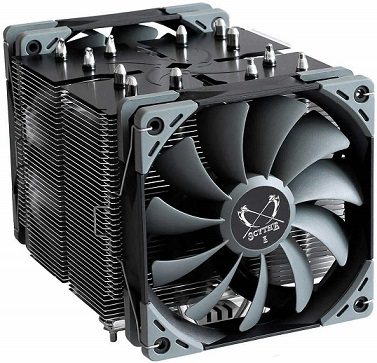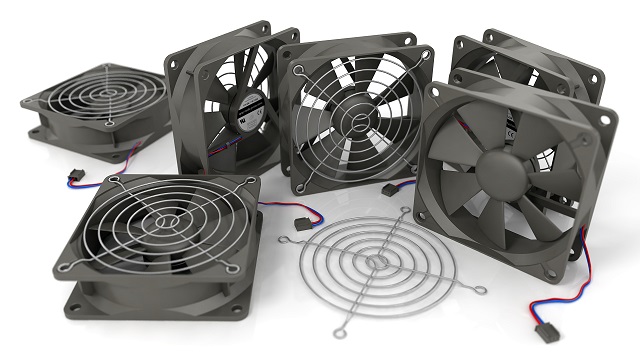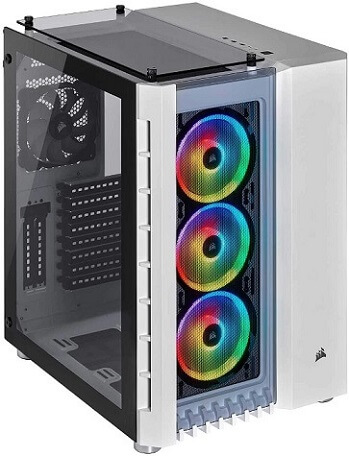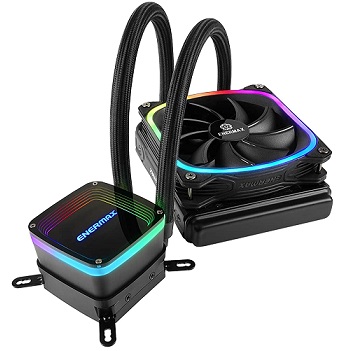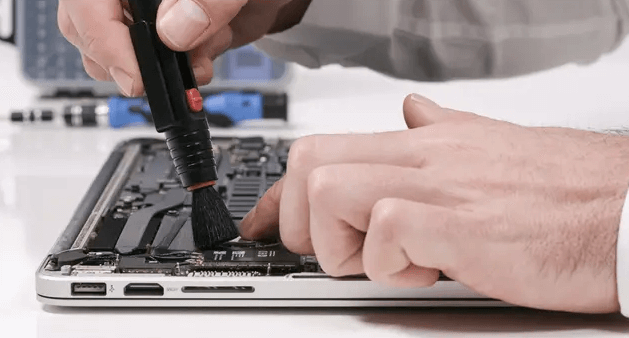Heat is always an issue, be it computers, gadgets, or other electrical/electronic devices/appliances. Speaking of computers, the CPU is probably one of the hottest components in a desktop or laptop computer. Even though they can tolerate higher temperatures than other components, a CPU operating at continuously high temps is not good for its longevity and performance. There is the issue of Thermal Throttling. So, the immediate question is How to Lower CPU Temp?
In this guide, we will see more than a dozen ways to lower CPU temps. Note that all these different solutions on how to lower CPU temp are subjective and every user or use case has different requirements.
Outline
ToggleHow to Lower CPU Temp?
Clean Your PC
Over time, computers accumulate dust. A lot of dust. And this dust build-up inside the computer case is a bad thing for the overall performance of the system.
First of all, dust will obstruct the airflow, either from your CPU fan or case fans. Second, it blocks all the intake and exhaust vents/openings, thereby making it difficult for air to come in or go out.
So, clean your desktop regularly and keep it free from dust. Do not use vacuum cleaners or air blowers inside your computer. They are too powerful and can cause damage beyond repair.
A can of compressed air along with some microfiber towels is the simplest way to clean your PC from dust. If you have those tiny tire inflators or air pumps, you can use them, but with caution.
Reapply Thermal Compound/Paste
The job of the thermal compound or thermal paste is to increase the contact area between the CPU and the heatsink (without any air gaps) and efficiently transfer the heat from the CPU to the cooler.
It degrades or dries up over time and you have to reapply it once in a while. The good thing about thermal paste is it is very cheap, even compounds from known and popular brands.
You have to remove the heatsink or cooler off of the CPU. Then clean the old thermal paste using isopropyl alcohol and microfiber cloth. If the paste is very dry, use a sharp object such as a razor blade and carefully remove it.
Once the old thermal compound is off and you cleaned the surface of the CPU as well as the heatsink, apply the new compound on top of the CPU heat spreader and reinstall the heatsink.
There are several techniques and methods on how to apply thermal paste. For an average case, a pea-sized thermal compound right in the center of the CPU will do just fine.
Upgrade CPU Cooler
If you are using a stock CPU cooler then we highly recommend you to consider a better third-party CPU cooler. While a stock CPU cooler is sufficient for making your system up and running, it is not a recommended solution for intensive CPU usage.
Third-party Cooler, also known as After Market CPU Coolers tend to have better heat sink design as well as the fan. They help you lower the CPU temp better than the stock cooler.
Efficient Airflow
You might find this solution obvious but many users don’t build their systems with the intention of better or increased airflow.
The basic airflow designs are Positive Pressure and Negative Pressure. In a positive pressure system, the amount of air going in more than that is being pushed out. The opposite is true for the negative pressure system.
So, which one is better? The answer is neither one of them. Ideally, your system must have a neutral pressure. For this, you need to properly set the position of fans and also individually control them.
Add More Fans
Adding more fans to your case can increase the airflow of the system and it can also help in better CPU cooling.
Design/install your case fans in such a way that some fans intake fresh air from outside and some fans exhaust hot air from the system.
As we mentioned earlier, if you can control the speed of the individual case fan, then optimize their speed for better cooling as well as to create a neutral pressure in the case.
Clean Your Fans
While cleaning your case from dust is a crucial thing, it is also important you give attention to dust build-up on your fans (both CPU and case fans).
Cleaning fans is a relatively easy job. Just take them out and blow some compressed air.
Manage Your Cables
Nowadays, more PC builders are giving significant importance to proper cable management. While the aesthetics of the system improve with nice cable management, it also helps in better airflow.
If the cables and wires in your case are messy and unorganized, they will block airflow and also cause resistance to the free flow of air.
Just take a look inside your PC Case and spend some time adjusting all the cables for better cooling of the system.
Control Fans in BIOS
The good thing about modern CPU and Case fans is that you can easily control their speed as per the temperature of the CPU or the overall system.
Most UEFI BIOS allow you to set special fan speed curves. This option is set to ‘Auto’ by default. You can easily modify the speed of the CPU fan as well as some case fans in the BIOS.
Make sure that Case Fans have PWM control and also you plug them into special fan connectors on the motherboard.
Several fans and accessory manufacturers such as Corsair have their own software to control Case fans. They also sell dedicated fans and LED control hubs, which allow you to plug several case fans.
Upgrade Your Case
The design of a PC Case plays an important role in the cooling of the CPU as well as the overall system. A good case will have options for intake and exhaust. They will have enough room to install several case fans and large CPU coolers or radiators.
Another thing most case manufacturers are concentrating on is cable management. They have several design options to properly arrange cables, create more air flow without any obstruction, and also support cooling options.
If you have an old case with a completely blocked design, then we recommend you do some research and purchase a decent PC Case. The cost of a good quality Computer Case from NZXT, Corsair, Lian Li, etc. is very low.
Position of Your PC
Where you place your PC is also important in lowering the CPU Temp. That’s right. Even though you installed a good number of fans and a decent CPU Cooler, if you put the PC in a closed space or poorly ventilated area, then all those efforts are ineffective.
Is Your Case Open or Close?
This is an ever-continuing debate, whether you should consider an open-air case or a closed case with directional airflow. While an open-air case has better overall airflow, it attracts huge amounts of dust. So, be ready to clean your PC on a weekly basis.
We recommend a good close case PC with all the airflow.
Invest in Water Cooling
If you want to know how to lower CPU Temp very efficiently, then invest in water cooling. The design and performance of modern water-cooling units have improved over the previous models.
Small AIO with radiator and fans can lower CPU temps very quickly. If you have the patience and skill to build a custom water-cooling block, then go ahead and try it. It is worth the investment if done right.
Are You Overclocking?
Overclocking is entirely a separate entity. The first thing you need if you want to overclock your CPU is a better cooler. Whether it is an air cooler or water cooler, there are several medium to high-end cooling solutions specifically for overclocking.
For Your Laptop
All the points we discussed so far are fairly applicable to desktop PCs. But what about laptops? Upgrading heatsinks and fans are almost impossible on a laptop.
You can clean the insides of your laptop frequently. This includes the fans, vents, and heatsink. While you are there, reapply the thermal compound every year or a year and a half.
All gaming laptops have fan control, where you can increase their speed when the load is high. This will keep the CPU temps low.
Conclusion
To use your PC for a long time without any degrading performance, you should monitor the temperatures of your system, particularly the CPU. But how to lower CPU Temp?
In this guide, we saw some important and easy-to-apply solutions to lower CPU temps.

